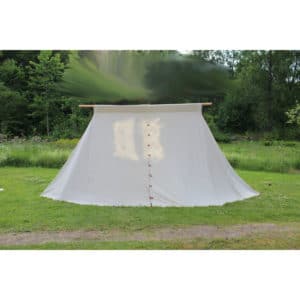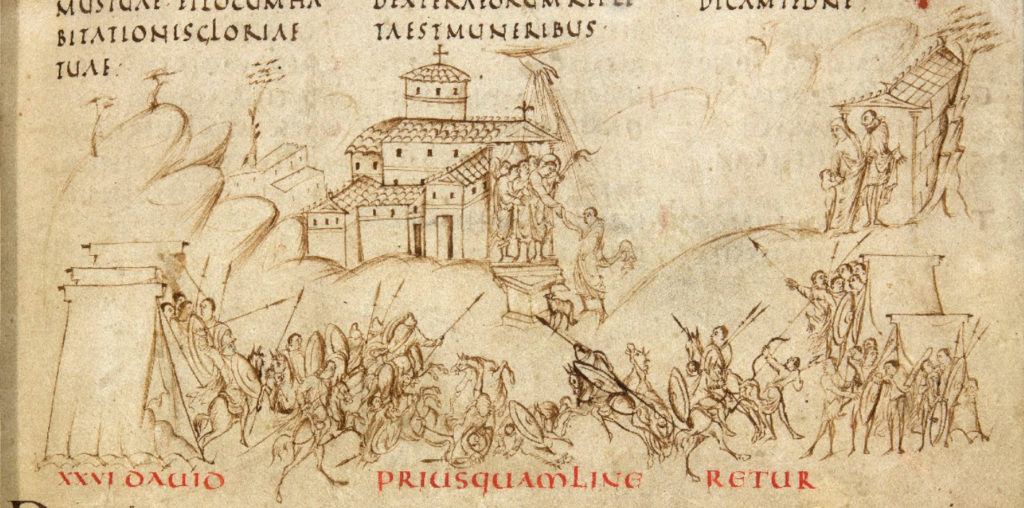
The Utrecht Psalter was made 820-830 AC near Reims in France, as most experts agree. It is seen as a key masterpiece of Carolingian art and it is probably the most valuable manuscript in the Netherlands. 166 lively pen illustrations are made to each psalm and the other texts in the manuscript (Chazelle, 1055). The exact purpose of these illustrations, and the “copy scale” of earlier models, are still discussed and remain unclear. The psalter was between about 1000 to 1640 in England, where it had a huge influence on Anglo-Saxon art. Therfore It was giving rise to what is known as the “Utrecht style”. It was copied at least three times in the Middle Ages after that.
We can see here on the pages 37 (above) and 57 mainly the so called “anglo-saxon” tents with 2 poles and a big beam on top which peaks sometimes out on each side of the tent sleeves. The entrance is on the head. We call these tents shape now also “Geteld”.
Also there is a on page 76 an illustration of a cone tent.
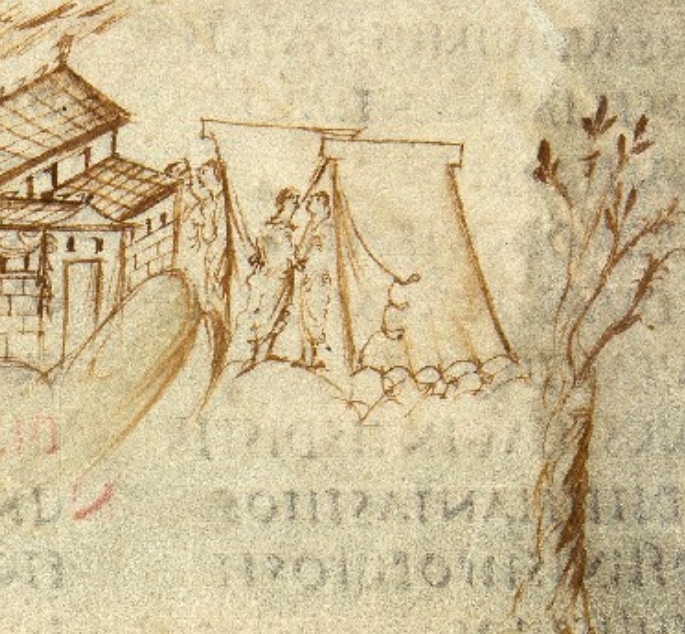
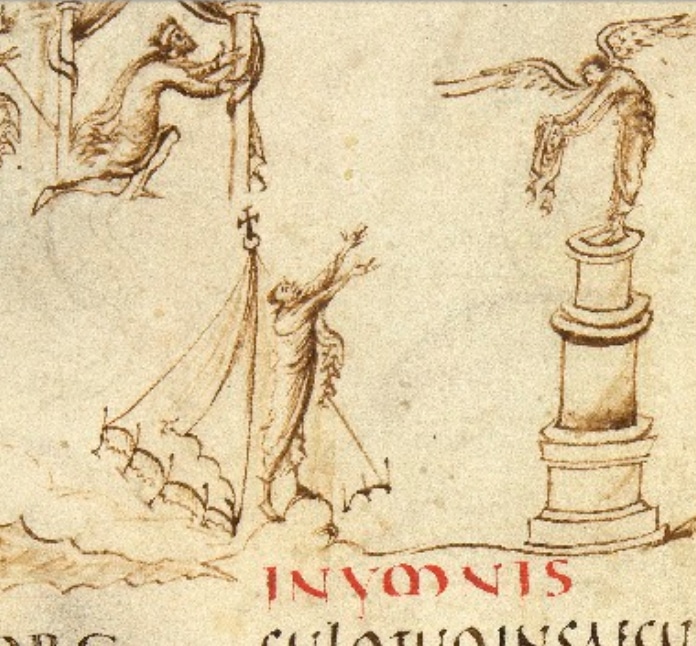
Here you can take a look at the full psalter: Universiteitsbibliotheek Utrecht – The Utrecht Pslater
We are making also tents like this:
SKADE Bostad can be orderd with a opening on the head instead of the the middle
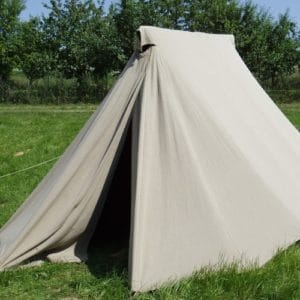
Sample for an entrance on the head
